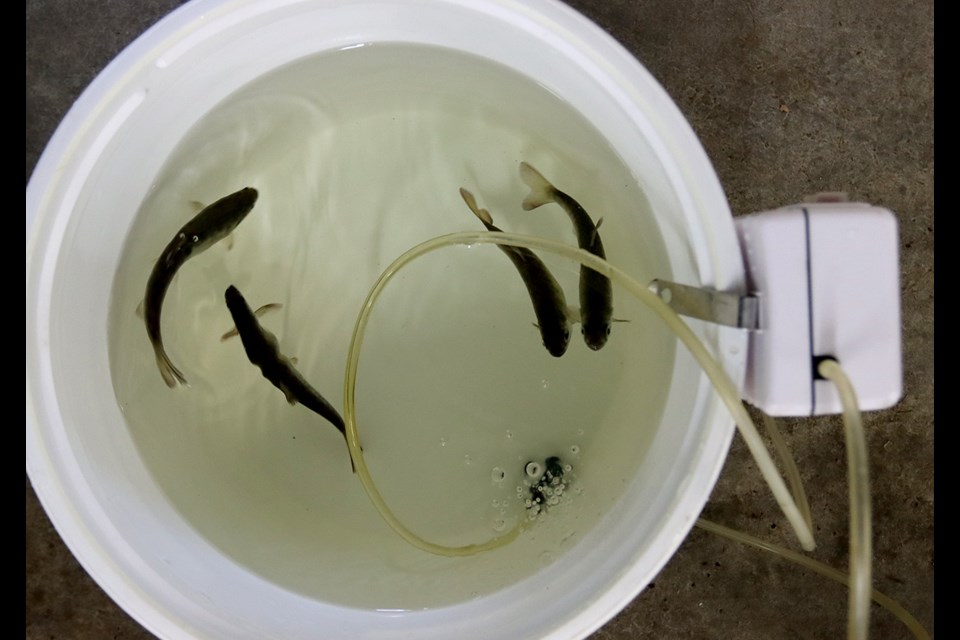Some very important fish are beginning their journey to the Pacific Ocean this week.
Among the thousands of coho salmon fingerlings that are being released into Port Moody’s Mossom Creek to hopefully begin their four-year round trip to life in the ocean and back to spawn are 90 implanted with tiny-battery operated transmitters. The electronics will allow scientists from the University of British Columbia to track their movements down the creek into Burrard Inlet and beyond.
The devices — about the size of a Nibs candy — only have enough power aboard to last through the summer. But in those critical months the fingerlings are finding their way in the wild, the team led by professor Scott Hinch, who’s the director of UBC’s natural resources conservation program, hopes to get a better picture of the kinds of hazards they face and their ability to survive their journey through Canada’s busiest port.
“There is natural predation from birds, seals, larger fish; however, in addition, salmon face over-fishing, pollution, hardened shores, light pollution, climate change and the impact of fish farms,” said Kevin Ryan, the president of the Burrard Inlet Marine Enhancement Society that runs the Mossom Creek hatchery. “The hope is using this innovative technology based on statistical data will give us a better picture of what’s going on.”
In preparation for the research project, which is being partially funded by money from the Pacific Salmon Foundation as well as the Port of Vancouver, along with donations in kind from UBC, volunteers from the hatchery deployed 10 receivers in buoys around the inlet, all the way to the Lions Gate Bridge.
As the fish swim past them, the receivers will collect data from the transmitters to create a picture of each of their travels.
The effort will also help guide the hatchery in its conservation initiatives, Ryan said.
“Hatchery volunteers spend thousands of hours making sure the salmon releases are as healthy as possible prior to release. We know salmon do return every year; however, we also know the returning numbers have been getting lower especially in the last several years.”





